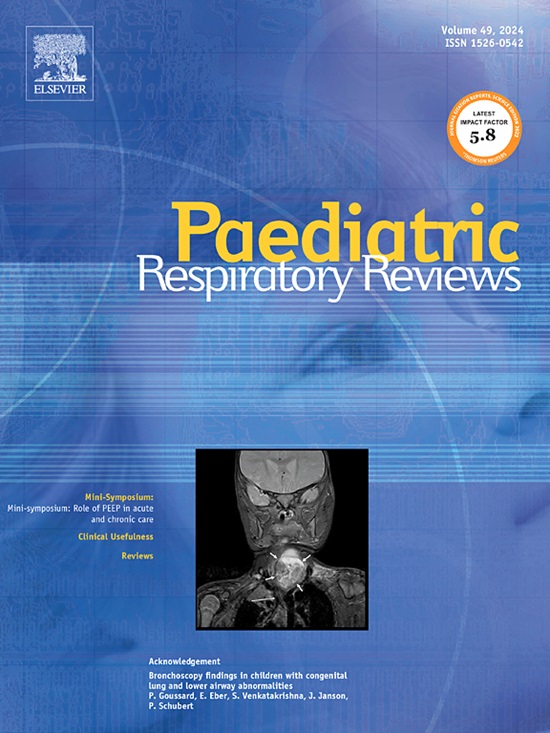评估维生素 D 在诊断呼吸窘迫婴儿中的临床价值:系统回顾和荟萃分析
IF 4
3区 医学
Q1 PEDIATRICS
引用次数: 0
摘要
呼吸窘迫(RD)是新生儿重症监护病房(NICU)最常见的入院原因。维生素D在胎儿肺结构的发育和强化以及表面活性剂的合成中的作用是有据可证的。血清25-羟基维生素D (Vit;D)已被研究其在RD中的诊断意义,但关于它如何具体影响婴儿及其母亲呼吸问题发展的研究有限。本研究的目的是通过系统回顾和荟萃分析来评估血清Vit水平之间的相关性。患有RD的母亲和新生儿的D,并确定治疗这两种人群对患病婴儿临床结果的影响。方法综合检索PubMed、ScienceDirect、Cochrane Library、ISI、谷歌Scholar等数据库,检索关键词为RD、诊断、维生素D、母亲、婴儿、维生素D补充、呼吸窘迫综合征(RDS)、新生儿短暂性呼吸急促(TTN)等。搜寻工作一直持续到2024年3月。系统地提取和分析母亲及其婴儿的维生素D水平,以确定Vit的诊断效果。D水平。计算平均差(MD)和95%置信区间,以确定Vit之间的关联。新生儿及其母亲体内的D水平以及婴儿发生RD、RDS和TTN的可能性。为了评估潜在的发表偏倚,采用随机效应模型生成漏斗图,并应用Egger回归检验。结果初步检索到298篇相关文章。其中,17篇文章共1582名婴儿(745例和837名健康对照)符合合格研究标准。其中6项为前瞻性队列研究、4项回顾性病例对照研究、4项随机对照试验(rct)和3项描述性分析研究。荟萃结果揭示了Vit和Vit之间的显著关联。D水平与婴儿RD风险(MD = 6.240, 95% CI: 4.840-7.840, P <;0.001)和母亲(MD = 8.053, 95%置信区间CI: 4.920 - -11.186, P & lt;0.001)。此外,发现RDS的风险有很强的相关性(MD = 5.493, 95% CI: 3.356-7.631, P <;0.001)和TTN (MD = 6.672, 95% CI: 4.072-9.272, P <;0.001), (MD = 8.595, 95%CI: 4.604-12.586, P <;在婴儿和母亲中均为0.001)。给予母亲50,000单位维生素D (MD = 8.595, 95% CI: 4.604-12.586, P <;0.001)可使新生儿RD的可能性降低64% (RR = 0.36, 95% CI: 0.23-0.57, P <;0.001)。向婴儿补充维生素D与几个临床益处有关。结论我们的meta结果显示血清Vit水平之间存在显著相关性。D与婴儿RD、RDS和TTN的风险。母亲预防性服用维生素D对新生儿RD具有保护作用。此外,为早产儿提供维生素D已显示出对减少呼吸系统并发症发生率的显着影响。本文章由计算机程序翻译,如有差异,请以英文原文为准。
Evaluation of vitamin D in the diagnosis of infants with respiratory distress, the clinical value: A systematic review and meta-analysis
Introduction
Respiratory distress (RD) is the most common cause of admission to the Neonatal Intensive Care Unit (NICU). The role of Vitamin D in the development and fortification of fetal pulmonary architecture and the synthesis of surfactants is well-documented. While different serum levels of 25-hydroxyvitamin D (Vit. D) have been studied for their diagnostic significance in RD, there is limited research on how it specifically affects the development of respiratory problems in infants and their mothers. The purpose of the present study is a systematic review and meta-analysis to evaluate the correlation between serum levels of Vit. D in mothers and newborns with RD, and to determine the impact of treating either population on the clinical outcomes of afflicted infants.
Methods
A comprehensive literature search was conducted across various databases, including PubMed, ScienceDirect, Cochrane Library, ISI, and Google Scholar, using a combination of keywords such as RD, diagnosis, vitamin D, mothers, infants, vitamin D supplementation, Respiratory distress syndrome(RDS), and Transient Tachypnea of Newborn (TTN). The search was carried out until March 2024.The level of vitamin D in both mothers and their infants was systematically extracted and analyzed to determine the diagnostic efficacy of Vit. D levels. The mean difference (MD) was calculated along with a 95% confidence interval to determine the association between the Vit. D levels in newborns and their mothers and the likelihood of RD, RDS and TTN in infants. To assess potential publication bias, a funnel plot was generated and Egger’s regression test was applied, utilizing a random-effects model.
Results
Initially a total of 298 relevant articles was retrieved. Among them, 17 articles with a total of 1,582 infants (745 cases and 837 healthy controls) met the criteria as eligible studies. Of these six were prospective cohort studies, four retrospective case-control studies, four randomized controlled trials (RCTs), and three descriptive-analytical studies. The meta-results revealed a significant association between Vit. D levels and risk of RD in infants (MD = 6.240, 95 %CI: 4.840–7.840, P < 0.001) and mothers (MD = 8.053, 95 %CI: 4.920–11.186, P < 0.001). Furthermore, a strong association was found for risk of RDS (MD = 5.493, 95 %CI: 3.356–7.631, P < 0.001) in infants and TTN (MD = 6.672, 95 %CI: 4.072–9.272, P < 0.001), (MD = 8.595, 95%CI: 4.604-12.586, P < 0.001) both in infants and mothers. Administering 50,000 units of vitamin D to mothers (MD = 8.595, 95 %CI: 4.604–12.586, P < 0.001) prior to childbirth was observed to reduce the likelihood of RD in newborns by 64 % (RR = 0.36, 95 %CI: 0.23–0.57, P < 0.001). Supplemental vitamin D provided to infants was associated with several clinical benefits.
Conclusion
Our meta-results indicated a significant correlation between serum levels of Vit. D and the risk of RD, RDS and TTN in infants. Prophylactic maternal administration of vitamin D plays a protective role against neonatal RD. Additionally, providing vitamin D to premature infants has shown a significant impact in reducing the incidence of respiratory complications.
求助全文
通过发布文献求助,成功后即可免费获取论文全文。
去求助
来源期刊

Paediatric Respiratory Reviews
医学-呼吸系统
CiteScore
12.50
自引率
0.00%
发文量
40
审稿时长
23 days
期刊介绍:
Paediatric Respiratory Reviews offers authors the opportunity to submit their own editorials, educational reviews and short communications on topics relevant to paediatric respiratory medicine. These peer reviewed contributions will complement the commissioned reviews which will continue to form an integral part of the journal.
Subjects covered include:
• Epidemiology
• Immunology and cell biology
• Physiology
• Occupational disorders
• The role of allergens and pollutants
A particular emphasis is given to the recommendation of "best practice" for primary care physicians and paediatricians.
Paediatric Respiratory Reviews is aimed at general paediatricians but it should also be read by specialist paediatric physicians and nurses, respiratory physicians and general practitioners.
It is a journal for those who are busy and do not have time to read systematically through literature, but who need to stay up to date in the field of paediatric respiratory and sleep medicine.
 求助内容:
求助内容: 应助结果提醒方式:
应助结果提醒方式:


